
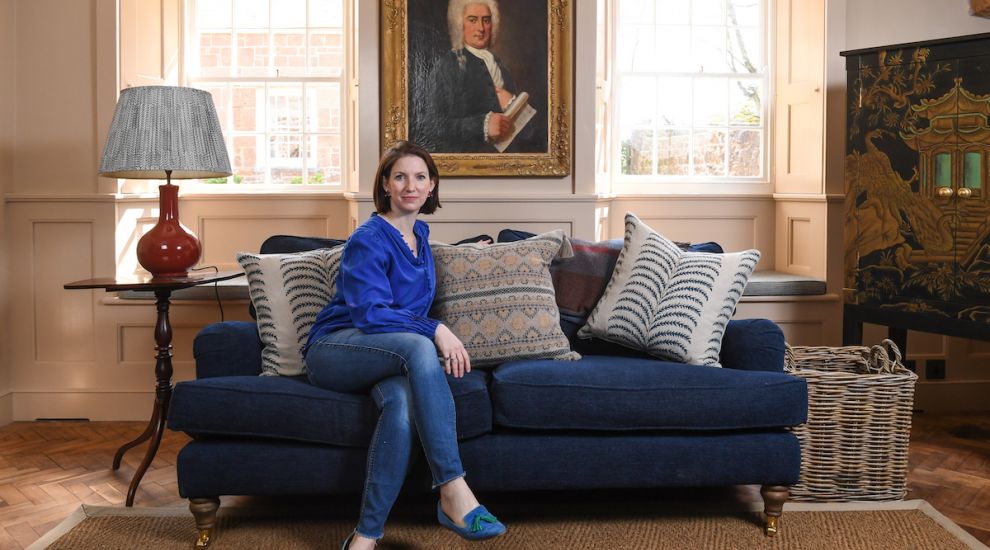

Moving from arias as an opera singer to area rugs as an interior designer might seem an unusual career pivot… but it’s a journey that Emilia Lacy credits for her focus on bringing harmony and homeliness to every space she curates.
The daughter of esteemed Opera Director Sir David Pountney CBE, Emilia's young life was punctuated by performances – by just age nine, she was singing in the English National Opera.
Naturally, the melodies in the both the productions she viewed and took part in would always enthral, but something in the set design, which she would often observe her father working on, sang to her heart.
In particular, she remembers feeling a pull as she observed the National Theatre’s Wind in the Willows, which saw the riverbank idyll portrayed on a revolving stage.
“Mole and Ratty’s house were underneath the set but then came up - as a child, that idea of cosy little homes under the ground… and all of those books you’d have as a child with those beautiful pictures of little homes filled with delicious things to eat and cosy corner to read a book, that always massively appealed to me. Sleek, beige, sophisticated? Not interested.”
The appeal, she wonders, might be linked to the fact her family travelled a lot when she was a child.
“I wonder whether it was… an element of wanting to find home or make home. I absolutely loved to build houses as a child. I'm sure that played a part. I remember drawing as a child. I'd quite often draw the cross-section of a house, and then draw rooms inside.”
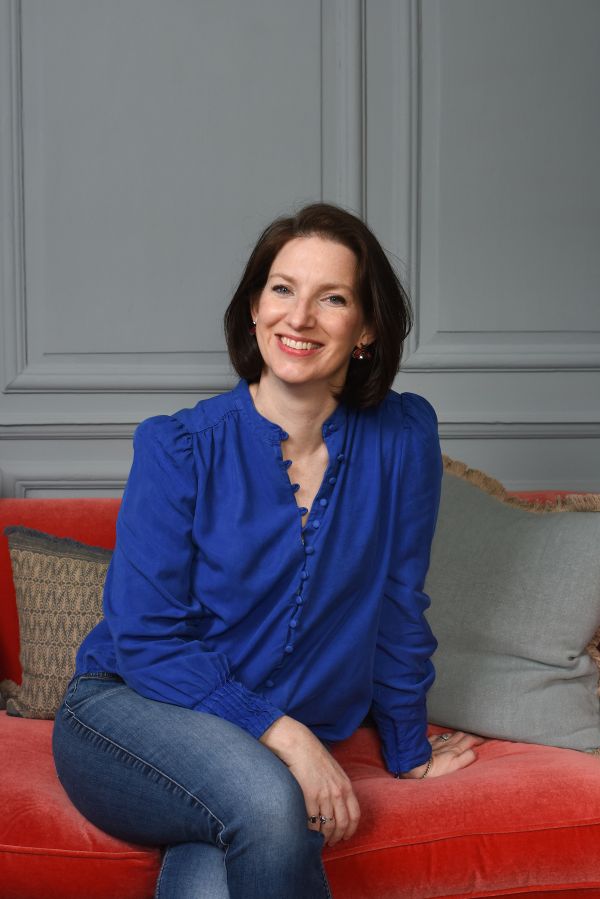
Pictured: Emilia Lacy of Ash Interiors, which was behind the transformation of the iconic Morel Farm.
While this may have been a clue as to her true calling, as well as her joy in being bought interior design magazines by her mother for a treat, it wasn’t for many years until Emilia began creating homes for others.
“For me, becoming an opera singer was a bit like, you know, your dad was a doctor and you become a GP… I always loved singing and performing. I went on to do music at university, then a post-grad in singing…. If I had become an accountant, I think everyone would have been really shocked.”
Emilia only first started properly dabbling in interior design when her husband’s career took her to BVI, where there was “very, very little classical music going on.”
“It's very hard to get hold of anything over there - and the things you can buy there tend to be either very, very poor quality or very expensive. I ended up doing lots of things like literally stopping on the side of the road and picking up a piece of furniture that was sticking out of a skip bringing it home and upcycling it in some way to try and make our house homely.
“I had made my flat in London quite nice as well, so my husband said, ‘You’ve always had an interest in this… Why don’t you think about doing this as the next thing?’”
It was from there that a career started to develop “organically”, with Emilia taking up a role at a “beautiful” homeware store which led to opportunities to take on varied interior design projects, ranging from working on a boat saloon remodel to a renovation of a four-star resort.
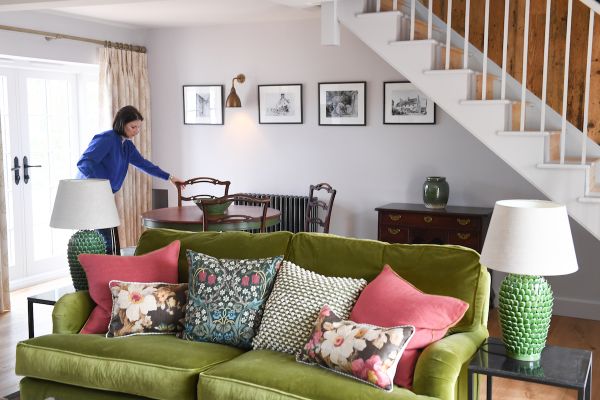
Pictured: "'Why don’t you think about doing this as the next thing?’”
Securing such prestigious jobs was likely linked to her natural aptitude for “making homes homely” - no matter how unappealing they might first appear.
One such challenge was a property that had been languishing on the market for more than a year. Not only was its exceptionally awkward layout an issue, but “there was a really quite shocking mural on the floor outside this big room of a very provocative mermaid… I think that probably put people off.”
However, with some clever “dividing up” of the space using furniture, homely second-hand additions and a strategically placed rug, the property was transformed.
“Everybody we knew had seen this house for rent and nobody had accepted taking it on because no one could imagine how to make it nice. And then we rented it and people couldn't believe how nice it was. I suppose that’s where I started to realise I did have some sort of natural flair for it.”
However, Emilia’s time working and living on the Caribbean archipelago came to an abrupt end when Hurricane Irma hit.
“I was actually in London very heavily pregnant with our son, and Brian [Emilia’s husband, ed.] was barricaded on the stairs [in BVI]. Our house was literally torn to pieces. He was evacuated out about four days later. Our son was born two weeks after that, a month earlier than expected. It was all quite dramatic.”
With a newborn to look after, and a ruined home that would be without power for around six months, it was clear the couple couldn’t remain in BVI.
After a conversation with Brian’s work, it was decided that the best solution would be to move to the Jersey office, though he continued to travel.
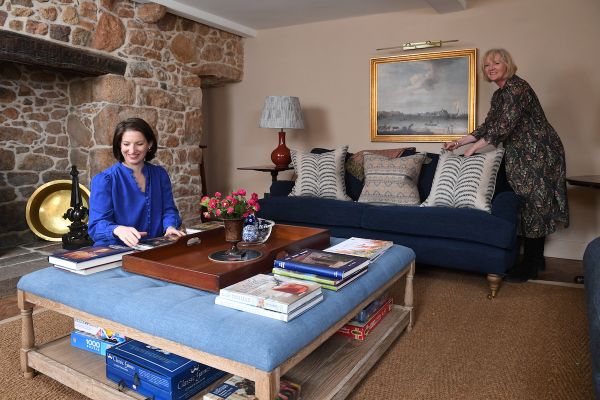
Pictured: "If I had become an accountant, I think everyone would have been really shocked.”
For a moment, time stopped for Emilia as the demands of childcare took over - but that changed during lockdown.
“I was stuck at home with a two-and-a-half-year-old really thinking, ‘This is not my purpose in life to be doing childcare forever.’”
That realisation prompted her to set up a website and Instagram account to “spread the word that I was an interior designer”, and “very quickly” she secured five clients.
It wasn’t long until she was put in touch with Ash Interiors founder Sue Morris - the respected brains behind several National Trust of Jersey renovations, ranging from its headquarters at The Elms in St. Mary to the iconic Georgian House at 16 New Street.
It was an opportune moment for the pair to start working together - not only because Sue was had begun to ponder whether it was time to retire and hand over the business after 20 years, but because a new and significant National Trust project had cropped up.
Situated in the rural heart of Jersey, 17th century Morel Farm was gifted to the National Trust by Arthur Morel in 1939, two years after the organisation was founded.
In 2004, his daughter, Mary Le Marquand Morel, donated the surrounding fields.
A beautiful example of a traditional farmhouse, complete with granite cobbled courtyard, its own bakehouse, large fireplaces, rows of pigsties, a press and circular apple crusher, and a roadside arch bearing the Great Fire of London date 1666, the farm was leased out to tenants for around 80 years.
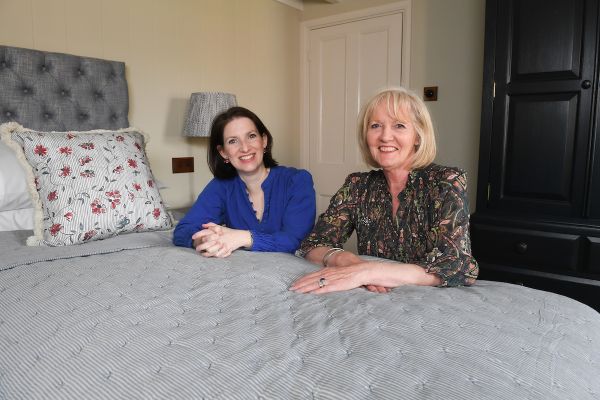
Pictured: Emilia Lacy with Sue Morris, founder of Ash Interiors.
However, the main farmhouse and two outbuildings have now been transformed into holiday lets following a major repair and restoration project led by JP Mauger.
The main 18th century farmhouse is now a four-bedroomed holiday home, while its bakehouse and ‘chapel’ are both one-bedroomed, self-contained units.
While the National Trust injected £500,000 into the project, it was a £2m boost from Government that made it possible.
The grant came from the Fiscal Stimulus Fund, which was set up in the wake of covid to accelerate projects that would stimulate the economy.
With interest in agritourism and alternative AirBnb-style holiday lets booming internationally, and Jersey seeking ways to bolster tourism as hotel beds decline, the ‘stimulus’ potential for the economy of the Morel Farm project was clear, but the concept was nonetheless controversial.
One group of campaigners argued that the National Trust’s plan was “hypocritical”, as its mission is to permanently preserve and safeguard places of historic interest and natural beauty for the benefit of the island.
They argued that renovating Morel Farm may be detrimental to the building’s historic character, while the pivot to tourism would potentially “deprive a Jersey farmer of home and living unit” and “destroy the very rural nature of this unique area”.
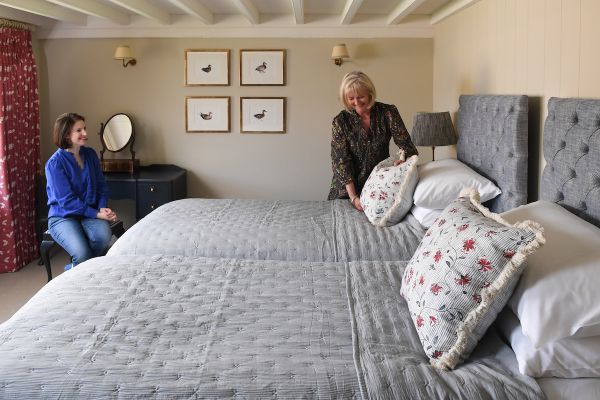
Pictured: Much of the furniture and many of the pictures adorning the walls in Morel Farm were sourced from the National Trust's own store.
While the holiday lets plan went ahead, such opposition saw the Trust drop its initial plan to also erect ‘clamping’ tents on the site.
It was a strong demonstration of how much islanders care about maintaining the island’s distinct look and feel - and something that has been taken into account every step of the way during the renovation process, as CEO Charles Alluto explained.
“We have kept as much of the historic detail as we can, and even when we’ve had to use modern materials, we’ve made them as authentically as we can, such as wall panels and windows.
“In some cases, where original features haven’t quite fitted in with the requirements of a modern home, we’ve retained them, such as an old fireplace in the main house, which is behind a cupboard door, and an old store in the kitchen."
He added: “Another blend of old and new is the heating – the traditional-looking radiators are, in fact, powered by an air-source heat pump. We have tried to future-proof the farm as much as possible.”
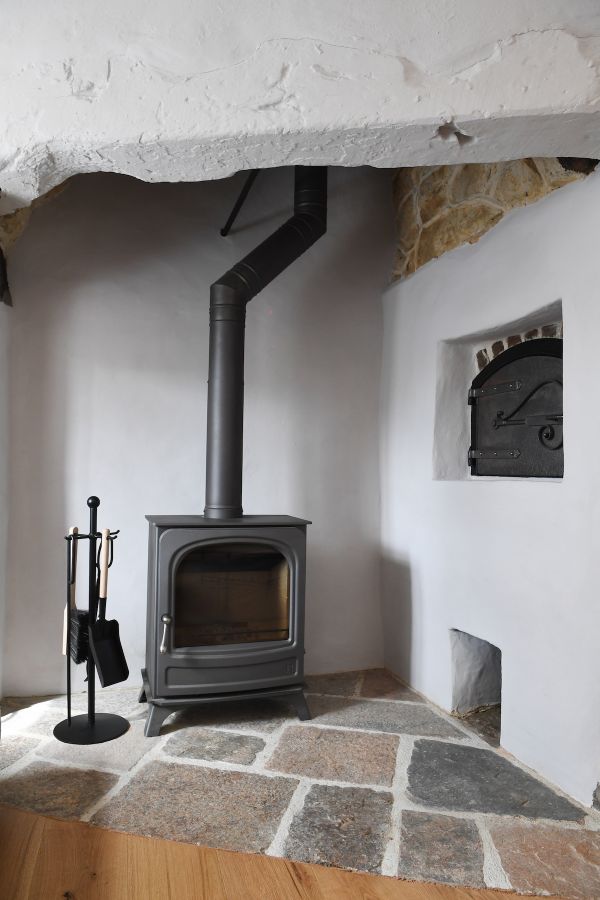
Pictured: Another blend of old and new is the heating – the traditional-looking radiators are, in fact, powered by an air-source heat pump.
Emphasis has also been placed on eco-friendly materials, upcycling and keeping development as ‘Genuine Jersey’ as possible.
Those might sound like new concepts, but it follows historic form for the property - indeed, when a gift of 1,000 guineas from a Glamorgan-based descendant of the original owners led Morel Farm to get a new roof in 1957, the Jersey Weekly Post recorded: “The new roof will be of red Jersey pantiles which have been obtained from several sources in different parts of the island. Use will also be made of the old tiles taken down from the roof at the rear of the house.”
That same thinking has applied to the interior design process led by Ash Interiors.
Brush past the outrageous pink camellias adorning the property outside and peep through a window, and the eyes will be treated to comforting olive greens, cerulean blues and indigo from the Little Greene Paint Company (one of the first UK paint manufacturers to achieve the European environmental standard in 2004) and Edward Bulmer Paint Company (plastic-free, carbon neutral paint made from plants) - hues that feel modern, but not screamingly so.
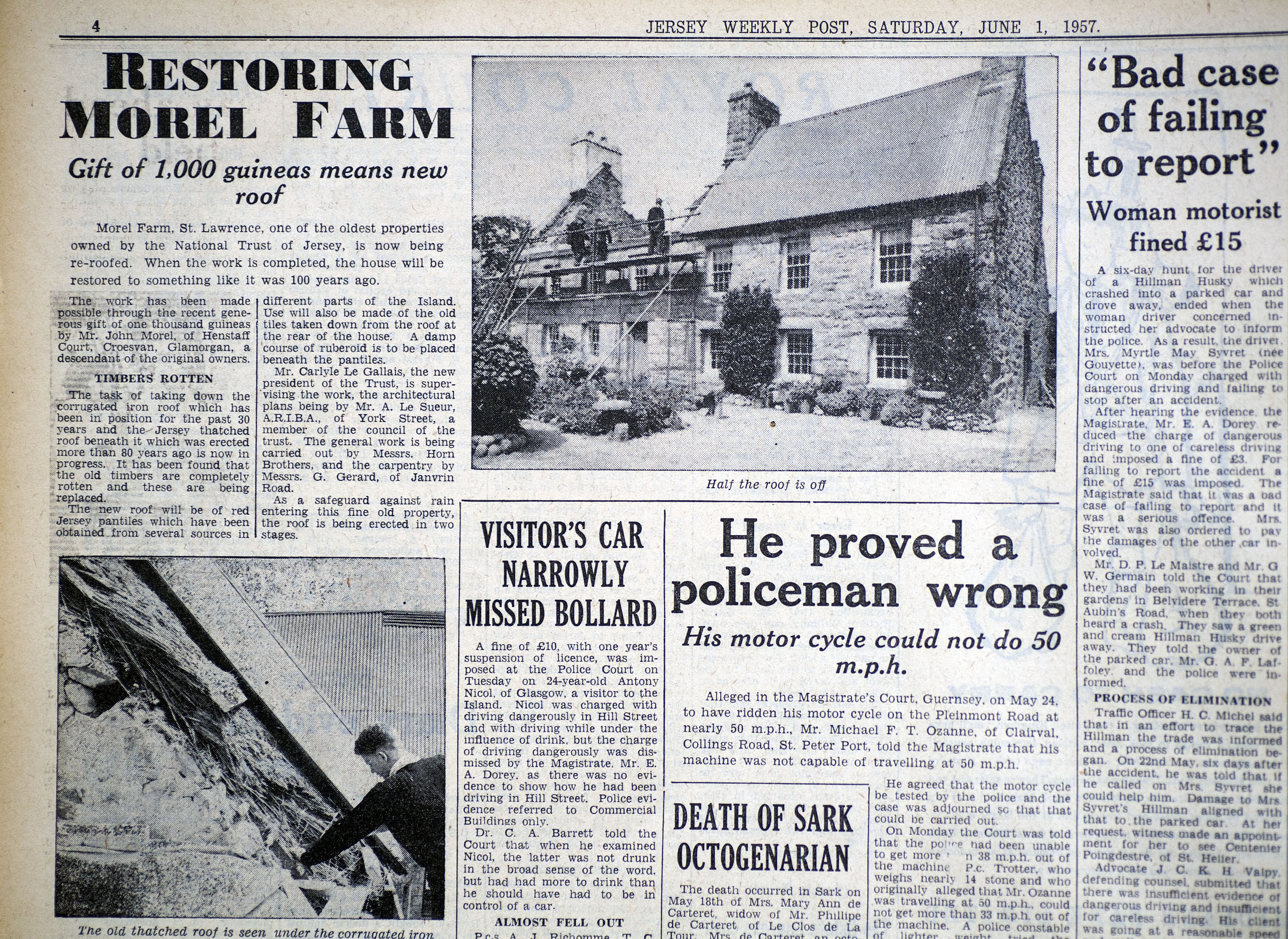
Pictured: A clipping from a 1957 edition of Jersey Weekly Post about a previous Morel Farm restoration attempt.
The kitchen, meanwhile, retains a rustic feel - no white worktops or chrome in sight - but is nonetheless fitted with “all the latest mod cons”.
Though there’s a sprinkling of charity shop chic throughout, most of the furnishings and decorations have been sourced from the treasure trove that is the National Trust’s private collection of donated and on-loan pieces.
“It meant going into an incredibly dusty store, piled high with things, creeping around wiping off the cobwebs, trying to take a picture of something and measuring and saying, ‘Well, that could fit into this room?’,” Emilia explained.
The resulting selections ranged from a chiffonier to music cabinets which were lovingly restored.
Also sourced from the National Trust were portraits of the Morel family, which have taken up pride of place in the dining room after their frames were restored by local paint finish expert Annie Martland, who also hand-grained the property’s original doors.
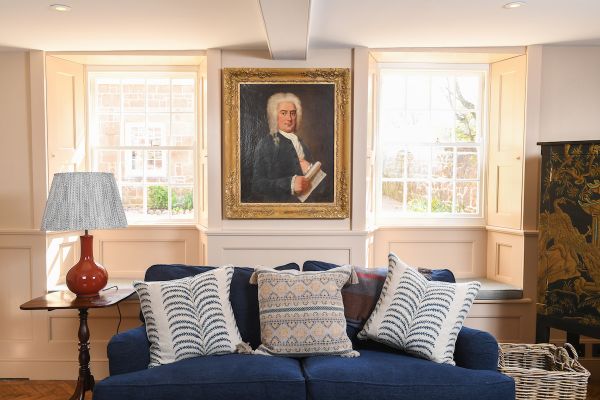
Pictured: Also sourced from the National Trust were portraits of the Morel family.
Annie is one of many on-island creatives to have helped in the project.
“We've used on island upholsterers, curtain makers, people who've made cushions, we've used the levers, boys and kitchen department to supply or kitchens, run rails, on the bathrooms, Simmons who supplied the bed - we’ve really tried to make it as much of a Jersey project as possible,” Emilia said.
Of course, not everything can be sourced locally - the National Trust tiles have been sourced from Artisans of Devizes in the UK, as well as some fabrics.
Sourcing materials - and, in particular, getting them shipped to the island - is one of the reasons why interior design is another industry feeling the inflationary pinch.
Emilia bought Ash Interiors from Sue, who continued to work on the Morel Farm project, just over a year ago - but a lot changed in that short space of time.
“Sue, having taken a step back from the business, would say, ‘Can we use this fabric?’ She'd be expecting it to be, £60 a metre, and suddenly, it's £80 or £100 a metre. Those jumps are quite big. So I think, you know, costs have gone up across the board.
“…Then there's the shipping charge. [It’s] always much more when you're when you're shopping from a smaller company, but then you don’t want to not support the smaller designers either. So there's a bit of a trade-off there.”
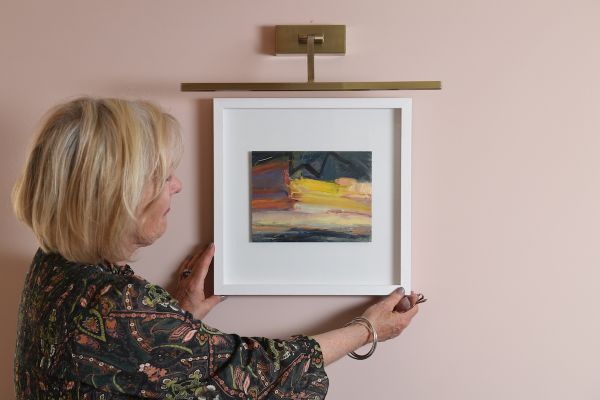
Pictured: Sourcing materials is one of the reasons why interior design is another industry feeling the inflationary pinch.
Even sourcing inspiration can incur an expense - while Instagram is “amazing” for finding new things, it’s still important to travel to London for trade shows and Design Week to “keep your finger on the pulse”, Emilia says.
In this challenging costs context, savvy, sustainable thinking is key. And even more so when the project you’re working on only has a small budget.
“It’s the whole eco thing of reusing what you've already got. [In the Morel Farm project], we’ve used off-cuts from curtains and cushions, so that we’ve used as much as we can of a roll of fabric.”
In curating Morel Farm’s interior, the designers made a conscious choice not to stick rigidly to a single time period. Instead, they have matched “complementary” dark woods and patterns for an overall effect.
“It sort of doesn't matter if they're Victorian-old, Edwardian-old, or Georgian-old, they can all work together,” Emilia says.
While such time periods may evoke thoughts of stuffy, traditional, even pretentious, surrounds, Emilia assures: “We were bearing in mind that it is going to be a holiday house. Ithas to be comfortable for lots of people to be staying in at the same time. You need room for people to sit around the kitchen table and a different space for people to break away and have a quiet moment, as everyone else is watching telly, somewhere to put the buckets and spades.”
Beyond Morel Farm, designing homes that are to be lived in, not just looked at, is the golden thread through all of Emilia’s work.
The self-confessed “unapologetic dog lady” - owner to 10-year-old Roxy - says she wants to design places “where a dog could sit on the sofa.”
“And where there are children’s toys - yes, there are places to put the toys away - but where children could live. Not a pristine home.
“…I’m all about the cosy. The cosy, homely things can be chipped. That's fine. Things can be old, things can be ugly, it's doesn’t have to be beautiful.”
There’s that word again: “homely”.
This article first appeared in the May edition of Connect Magazine, which you can read in full below...
Comments
Comments on this story express the views of the commentator only, not Bailiwick Publishing. We are unable to guarantee the accuracy of any of those comments.